Downsview Satellite Data Laboratory - 1981
Three photos and Zephyr descriptions - scroll downScroll further for satellite dish arrays beside Downsview building
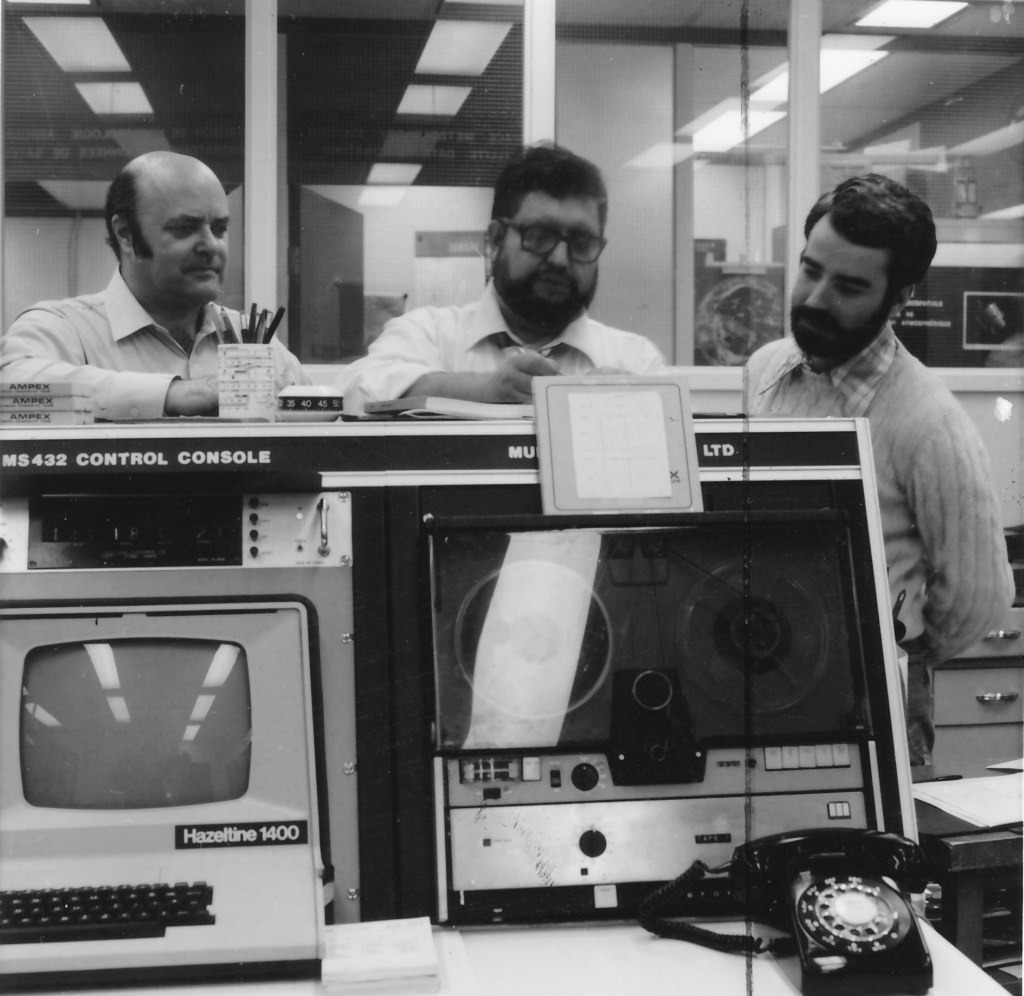
|
Above:
John Lewis {left), Alex
Aldunate (centre) and Russ
Welsh (right) stand by the satellite
data laboratory
communication controls in the AES Downsview building. The
satellite data
lab receives frequent reports from the GOES satellite and is one of
the most popular attractions for visiting teachers, students and
special interest groups.
|
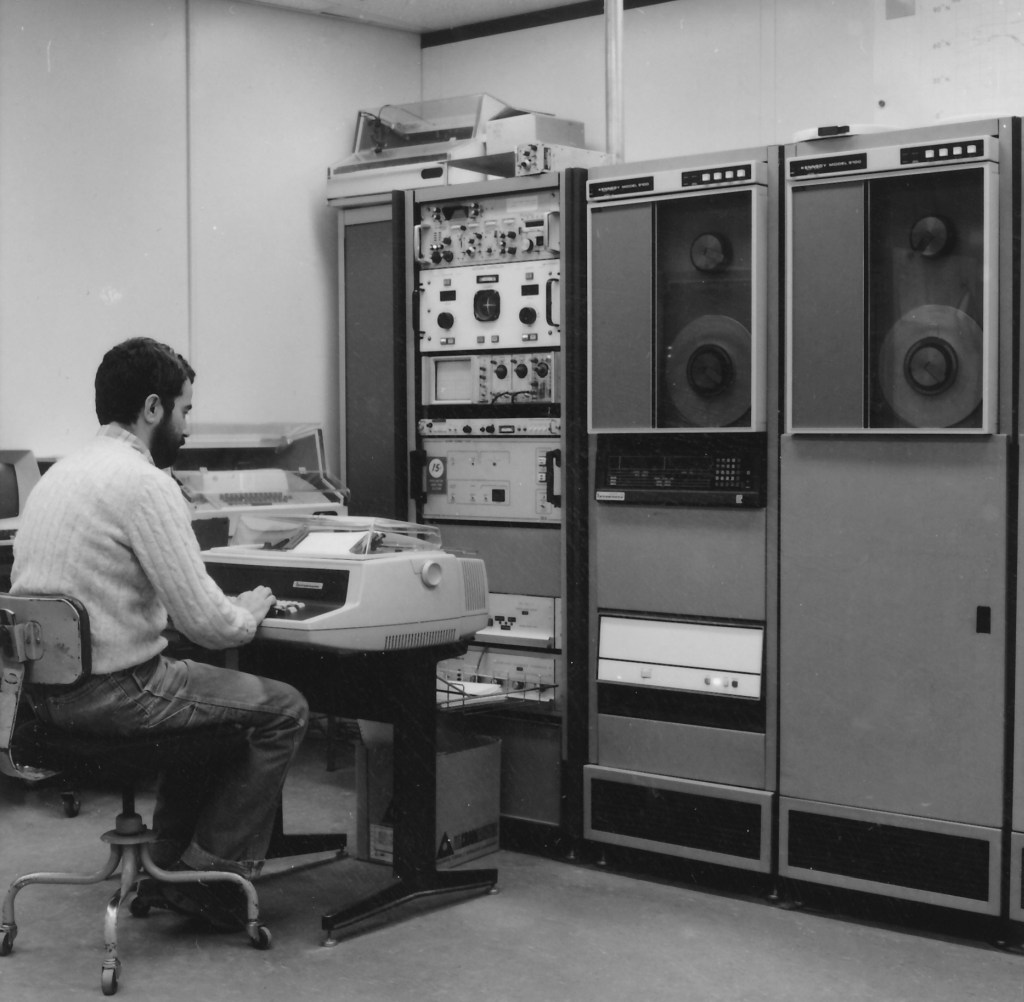 Russ Welsh at keyboard |
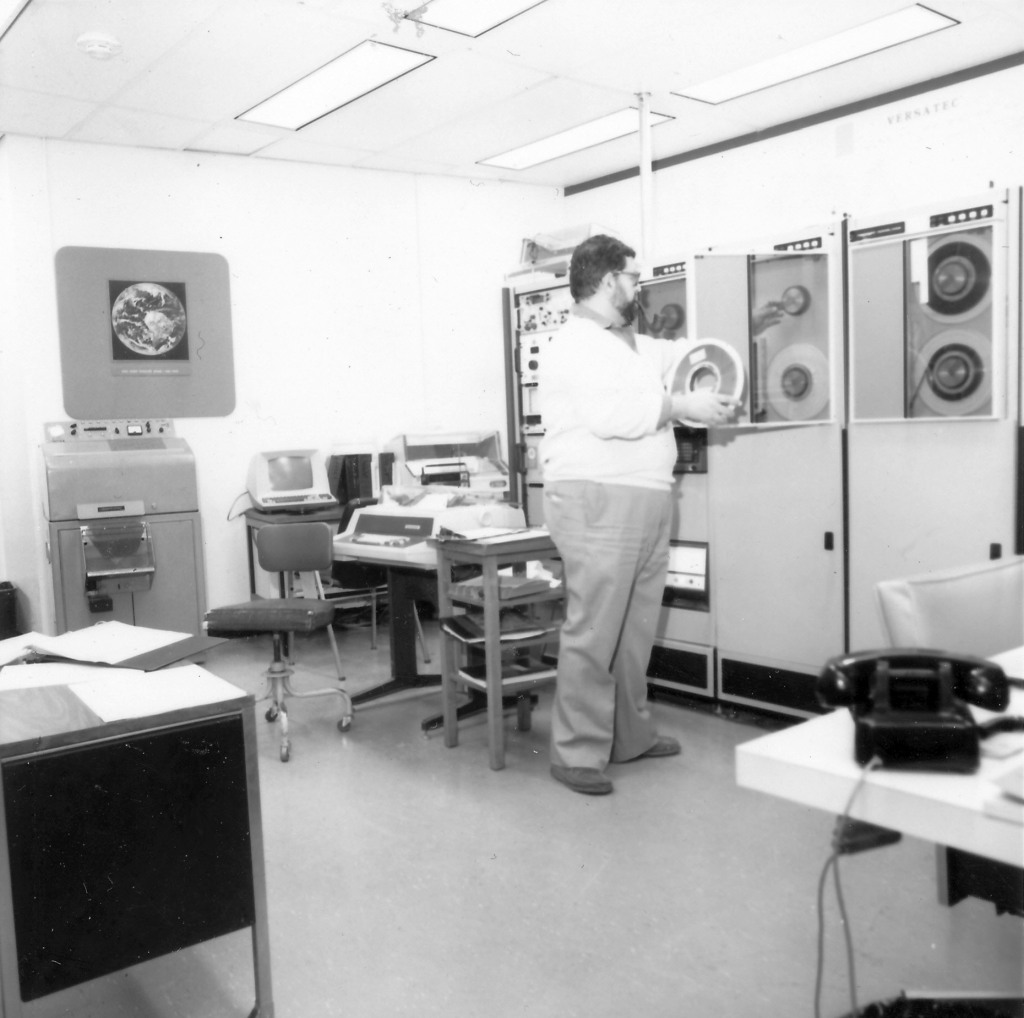 Alex Aldunate loading tapes |
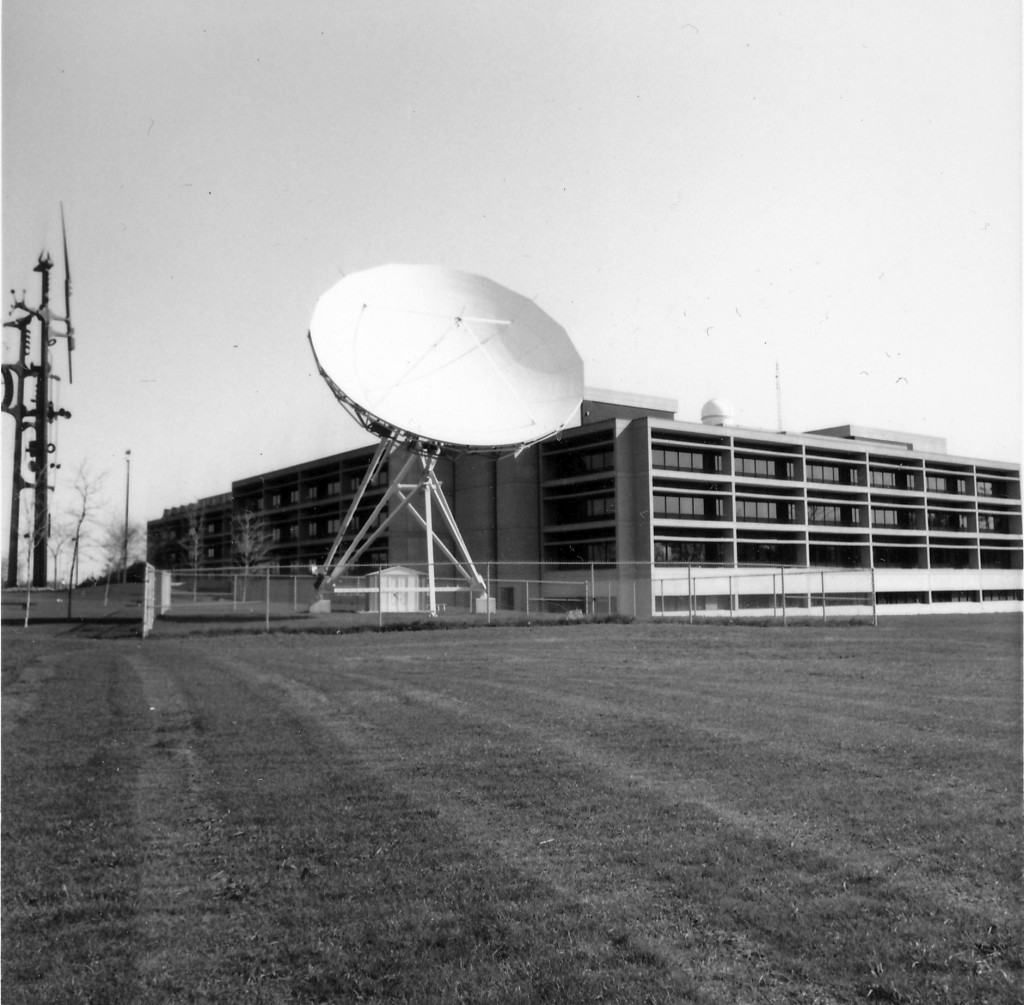 GOES satellite monitoring dish |
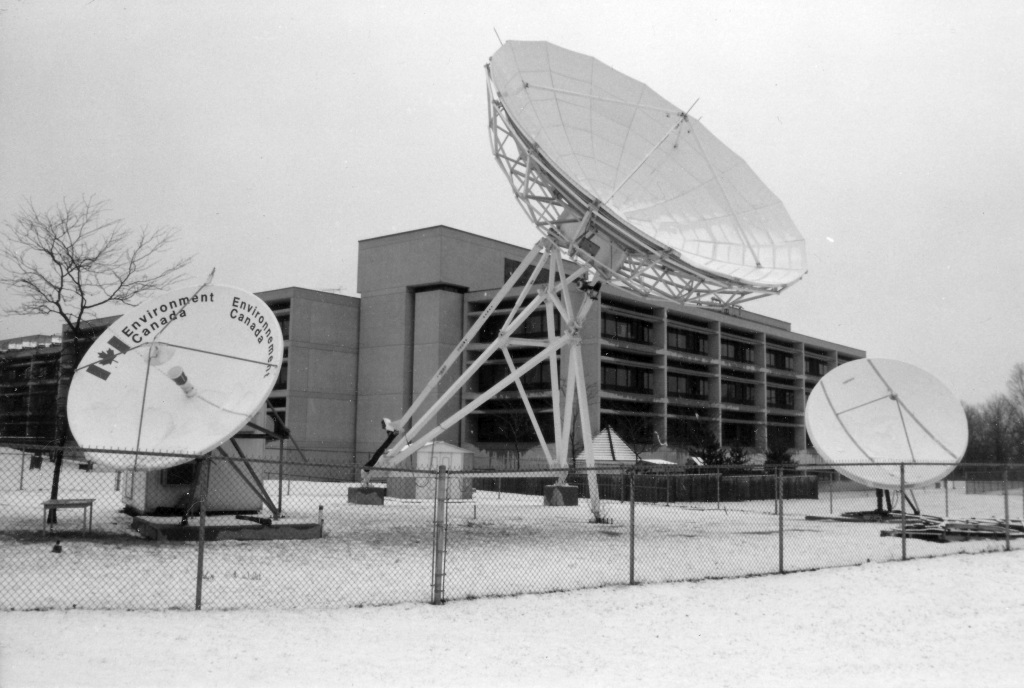 satellite dish array |
|
More details from the
July / August 1981 issue of Zephyr:................
Funding injects new life into satellite programs A million dollar a
year expansion of the Atmospheric Research Directorate's meteorological
satellite research program has been approved by Cabinet. The $6 million
project to continue over five years, will seek ways of better using
satellite data in weather and sea ice forecasting operation and will
form an integral part of the Canadian space program.
Graeme Morrissey, chief of the Aerospace Meteorology Division of AES says that the program aims to improve the service's ability to exploit the opportunities of satellite data. He explains a key characteristic of satellites is "radiance," but adds that most of the satellite data currently used by AES is in the form of imagery. "These images have been very useful," he says "and some form of similar display will still be around forecast offices well into the next century. But as the service moves slowly, yet methodically towards fully objective forecasting, methods must be found to conduct geographical measurements via radiance." Mr. Morrissey says the program contains the following projects: RAINSAT, a short range precipitation forecasting system based on weather radar and geostationary satellite data: TOVS, a project to develop products based on satellite sounding data with emphasis on severe weather forecasting; ICE STATUS, a computer-aided analysis system to obtain ice information from radiance measurements, and finally, a research and development (R & D) program applying microwave radiance to weather, sea state and ice forecasting. Mr. Morrissey adds that all the programs require a substantial increase in satellite data processing systems including the introduction of the latest computer graphic technology. He says most of the additional funding will be used for R & D in the university and industrial sectors "so that an industrial base will be set up to allow rapid integration of new systems into AES operations once these have passed the demonstration phases." |